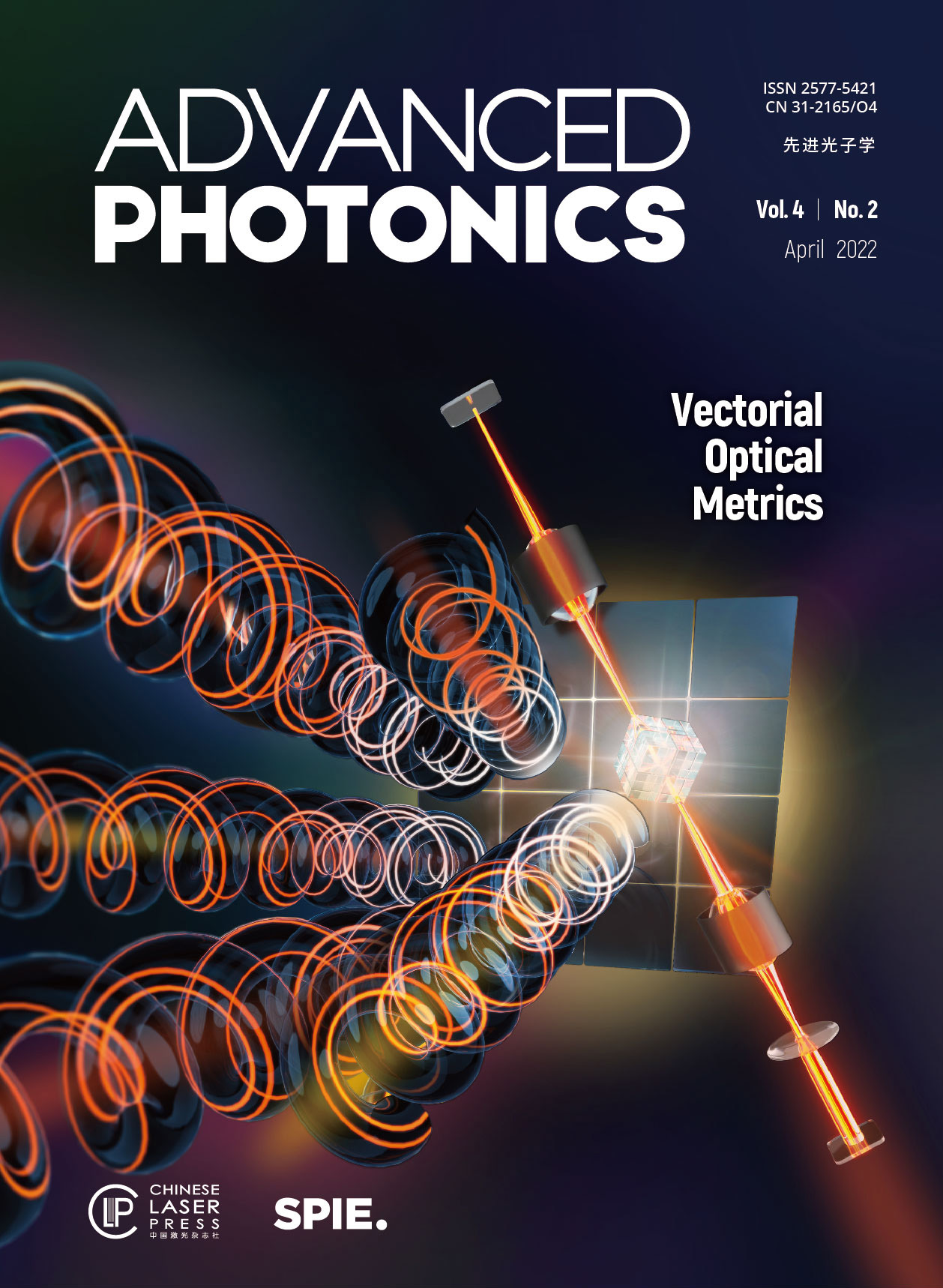 View fulltext
View fulltext
The image illustrates a schematic of a Mueller matrix measurement system and a conceptional Mueller matrix of the sample (4x4 matrix), as well as the related vectorial properties of the light beams.
A recently developed strategy to generate optical nonlinearities from various emitters localized in multilayer core/shell optical nanocrystals represents significant progress and great potential.
Prof. Xiang Zhang discusses his groundbreaking discoveries, innovative developments, and inspirations, with helpful advice and insights on future research directions.
Metasurfaces have attracted great attention due to their ability to manipulate the phase, amplitude, and polarization of light in a compact form. Tunable metasurfaces have been investigated recently through the integration with mechanically moving components and electrically tunable elements. Two interesting applications, in particular, are to vary the focal point of metalenses and to switch between holographic images. We present the recent progress on tunable metasurfaces focused on metalenses and metaholograms, including the basic working principles, advantages, and disadvantages of each working mechanism. We classify the tunable stimuli based on the light source and electrical bias, as well as others such as thermal and mechanical modulation. We conclude by summarizing the recent progress of metalenses and metaholograms, and providing our perspectives for the further development of tunable metasurfaces.
Femtosecond laser inscription or writing has been recognized as a powerful technique to engineer various materials toward a number of applications. By efficient modification of refractive indices of dielectric crystals, optical waveguides with diverse configurations have been produced by femtosecond laser writing. The waveguiding properties depend not only on the parameters of the laser writing but also on the nature of the crystals. The mode profile tailoring and polarization engineering are realizable by selecting appropriate fabrication conditions. In addition, regardless of the complexity of crystal refractive index changes induced by ultrafast pulses, several three-dimensional geometries have been designed and implemented that are useful for the fabrication of laser-written photonic chips. Some intriguing devices, e.g., waveguide lasers, wavelength converters, and quantum memories, have been made, exhibiting potential for applications in various areas. Our work gives a concise review of the femtosecond laser-inscribed waveguides in dielectric crystals and focuses on the recent advances of this research area, including the fundamentals, fabrication, and selected photonic applications.
Programmable metasurfaces enable real-time control of electromagnetic waves in a digital coding manner, which are suitable for implementing time-domain metasurfaces with strong harmonic manipulation capabilities. However, the time-domain metasurfaces are usually realized by adopting the wired electrical control method, which is effective and robust, but there are still some limitations. Here, we propose a light-controllable time-domain digital coding metasurface consisting of a full-polarization dynamic metasurface and a high-speed photoelectric detection circuit, from which the microwave reflection spectra are manipulated by time-varying light signals with periodic phase modulations. As demonstrated, the light-controllable time-domain digital coding metasurface is illuminated by the light signals with two designed time-coding sequences. The measured results show that the metasurface can well generate symmetrical harmonics and white-noise-like spectra, respectively, under such cases in the reflected wave. The proposed light-controllable time-varying metasurface offers a planar interface to tailor and link microwaves with lights in the time domain, which could promote the development of photoelectric hybrid metasurfaces and related multiphysics applications.
Advances in vectorial polarization-resolved imaging are bringing new capabilities to applications ranging from fundamental physics through to clinical diagnosis. Imaging polarimetry requires determination of the Mueller matrix (MM) at every point, providing a complete description of an object’s vectorial properties. Despite forming a comprehensive representation, the MM does not usually provide easily interpretable information about the object’s internal structure. Certain simpler vectorial metrics are derived from subsets of the MM elements. These metrics permit extraction of signatures that provide direct indicators of hidden optical properties of complex systems, while featuring an intriguing asymmetry about what information can or cannot be inferred via these metrics. We harness such characteristics to reveal the spin Hall effect of light, infer microscopic structure within laser-written photonic waveguides, and conduct rapid pathological diagnosis through analysis of healthy and cancerous tissue. This provides new insight for the broader usage of such asymmetric inferred vectorial information.
Nonlinear frequency conversion of structured beams has been of great interest recently. We present an intracavity second harmonic generation (SHG) of laser beams in transverse mode locking (TML) states with a specially designed sandwich such as a microchip laser. The intracavity nonlinear frequency conversion process of a laser beam in a TML state to its second harmonic is theoretically and experimentally investigated, considering different relative phase and weight parameters between the basic modes in the TML beam. Comparison between the far-field SHG beam patterns of fundamental frequency transverse modes in coherently locked and incoherently superposed states demonstrates that the SHG of TML beams can carry more information. Various rarely observed far-field SHG beam patterns are obtained, and they are consistent with the theoretical analysis and numerical simulations. With the obtained SHG beams, the characteristics of the structured fundamental frequency beams can also be conversely investigated or predicted. This work may have important applications in optical 3D printing, optical trapping of particles, and free-space optical communication areas.
Super-resolution structured illumination microscopy (SR-SIM) is an outstanding method for visualizing the subcellular dynamics in living cells. To date, by using elaborately designed systems and algorithms, SR-SIM can achieve rapid, optically sectioned, SR observation with hundreds to thousands of time points. However, real-time observation is still out of reach for most SIM setups as conventional algorithms for image reconstruction involve a heavy computing burden. To address this limitation, an accelerated reconstruction algorithm was developed by implementing a simplified workflow for SR-SIM, termed joint space and frequency reconstruction. This algorithm results in an 80-fold improvement in reconstruction speed relative to the widely used Wiener-SIM. Critically, the increased processing speed does not come at the expense of spatial resolution or sectioning capability, as demonstrated by live imaging of microtubule dynamics and mitochondrial tubulation.
Quantum state tomography (QST) is a crucial ingredient for almost all aspects of experimental quantum information processing. As an analog of the “imaging” technique in quantum settings, QST is born to be a data science problem, where machine learning techniques, noticeably neural networks, have been applied extensively. We build and demonstrate an optical neural network (ONN) for photonic polarization qubit QST. The ONN is equipped with built-in optical nonlinear activation functions based on electromagnetically induced transparency. The experimental results show that our ONN can determine the phase parameter of the qubit state accurately. As optics are highly desired for quantum interconnections, our ONN-QST may contribute to the realization of optical quantum networks and inspire the ideas combining artificial optical intelligence with quantum information studies.














